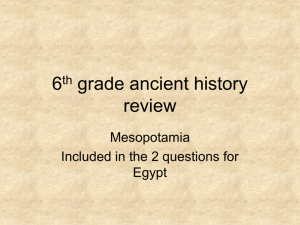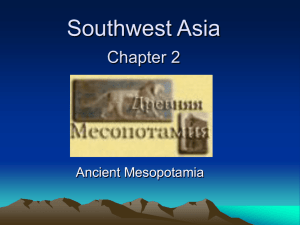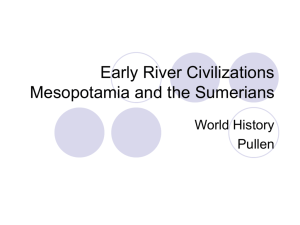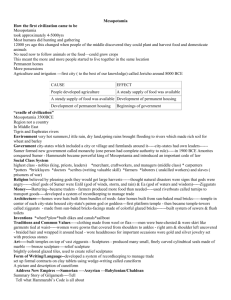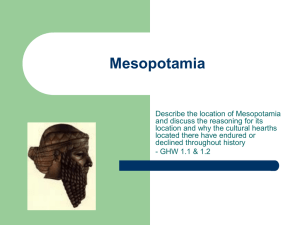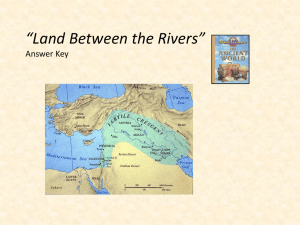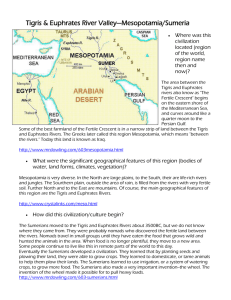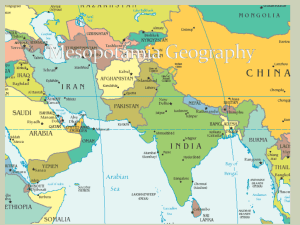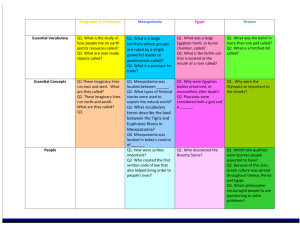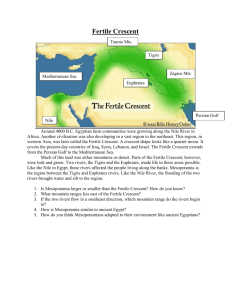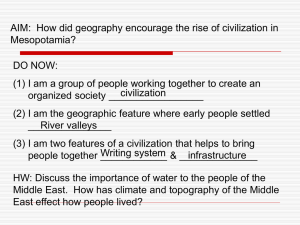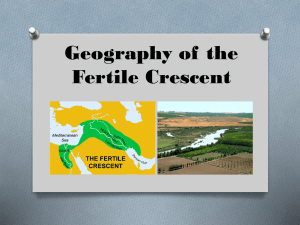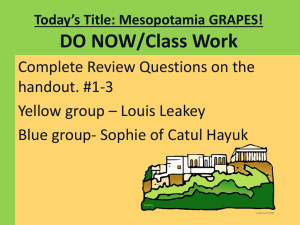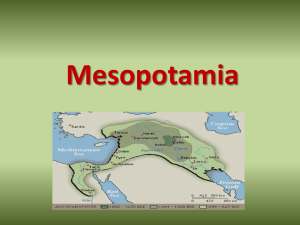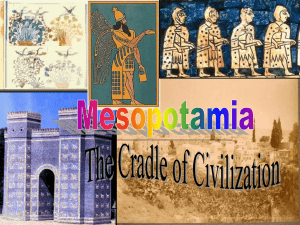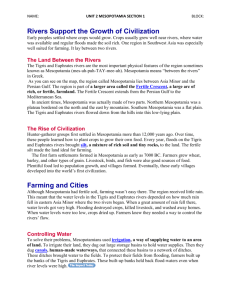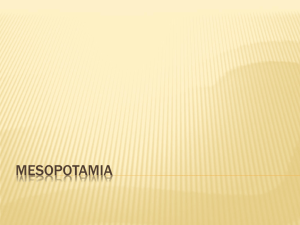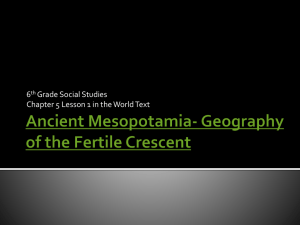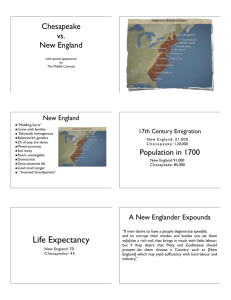fertile crescent notes pp new
advertisement
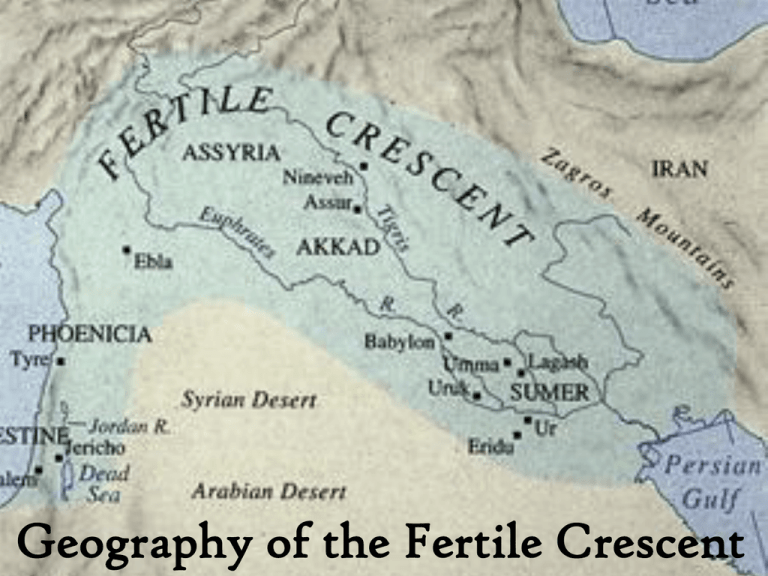
Geography of the Fertile Crescent The Land Between The Rivers The Fertile Crescent is a region of Western Asia. It is a lush, green area with fertile land because of the Tigris and Euphrates rivers which flow through the area. The ancient Greeks called the region between the Tigris and the Euphrates Mesopotamia. In Greek, Mesopotamia means “Land Between the Rivers” The rivers deposit silt, loose soil carried by water, as they flow south making the soil rich and good for farming. This area gets only a few sprinkles of rain each year. Droughts, or long periods without rain, were a constant threat The rivers often flooded the crops as they were about to be harvested. Mesopotamian farmers found ways to control flooding Levees – a wall that keeps a river within its banks. Irrigation – a system of canals to bring water to crops and fields. Mesopotamians were successful farmers because the soil was so rich and fertile. Mesopotamian farmers grew many crops successfully. Some Examples: wheat, barley, beans, onions, lettuce, cucumbers, herbs, date palm, apple, and pomegranate trees. Modern Mesopotamia (Iraq) is a desert due to erosion, or the wearing away of soil by wind or water. People cut many trees for buildings or firewood. The tree roots were holding the soil in place, so the soil dried up and blew away causing desert. The Cities of Sumer • Sumer is located in southern Mesopotamia. • Sumeria had many city-states who worshipped the same gods and had similar customs, but prized their independence. • The largest of these city-states were Ur, Uruk, and Eridu • City States were often at war to gain control of the Tigris and Euphrates Rivers. • They protected themselves from attack by building thick walls around the city • A king ruled his city state from a palace which could be seen from any point in the city. • Sumerians were great inventors, they invented irrigation systems, wheeled vehicles, the potter’s wheel, and sailboats. • The invention of the wheel greatly helped trade as they could now use horse powered carts to move goods, and helped in battle with the use of war chariots. The wheel also helped them travel greater distances than they could only on foot. The most important Sumerian invention was cuneiform writing. • Cuneiform was written by scratching a wet clay tablet with a sharp pen made from a reed. • At first the symbols looked like what they represented, but over time they were simplified to be written quickly. • Only a few boys and almost no girls went to school. • An official cuneiform writer was called a scribe. A scribe learned all 500 cuneiform symbols and recorded laws, songs, and legends. • Sumerians practiced polytheism, which is a belief in many gods. • They had thousands of gods and religion was very important to them. • They worshipped at tall flattened pyramids called Ziggurats. • They tried to please their gods through worship • and giving gifts to the temples. • King Sargon created the first empire and united all the city states under his rule. • He spread his laws across the empire through Cuneiform writing. • His daughter, Euheduana became a preistess and scribe. Daily Life in Sumer Wealthy families lived in large mud brick homes with servants/slaves, usually from conquered lands. In poor families everyone worked. Parents taught crafts to children Homes were small mud walled huts with reed mats for sleeping Clay pots were used to store foods and their few possessions. The father was the head of the family A woman did not even have the right to a divorce, but a man just had to pay a fine to get a divorce. People had games, music, and festivals. Gilgamesh was the hero of a famous tale about a quest for eternal life.
